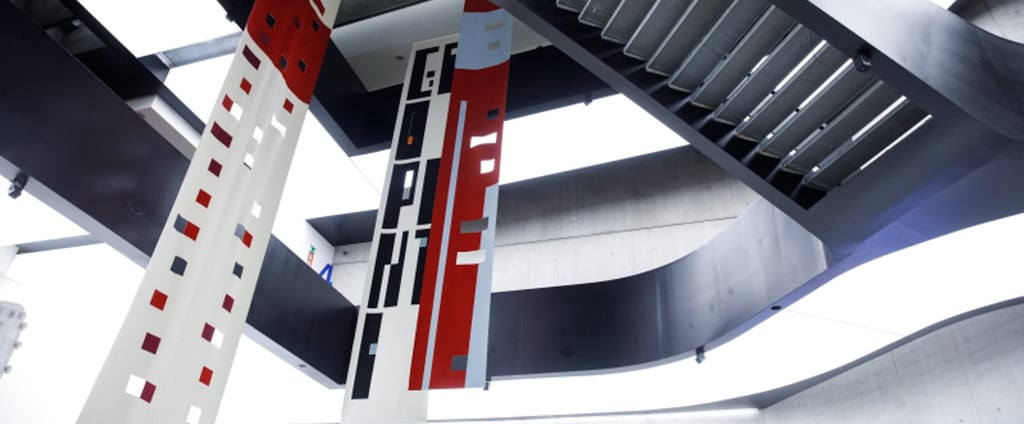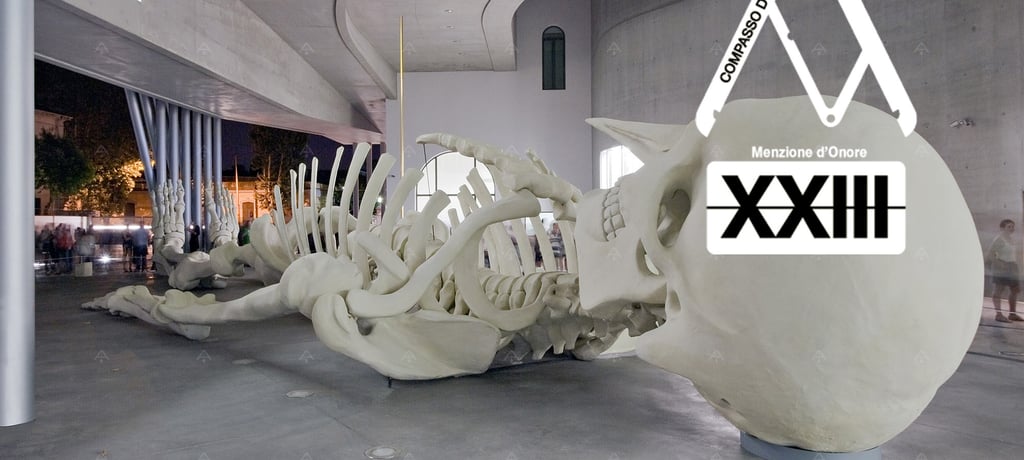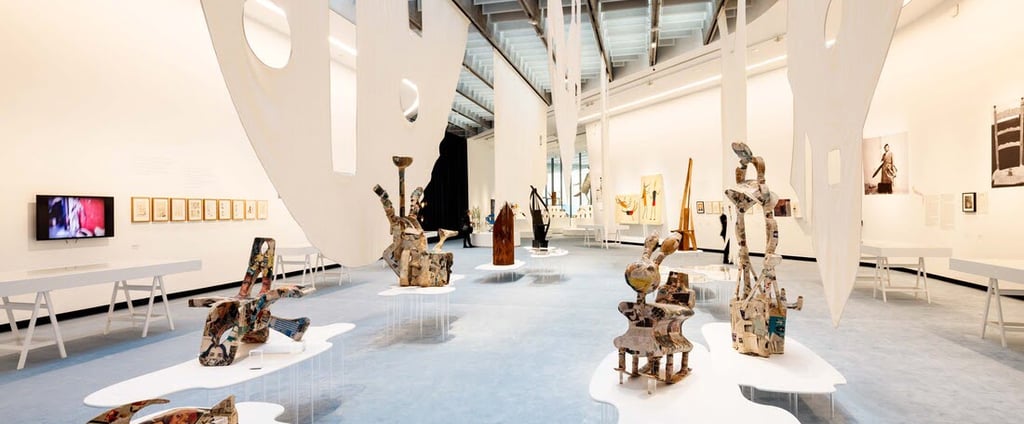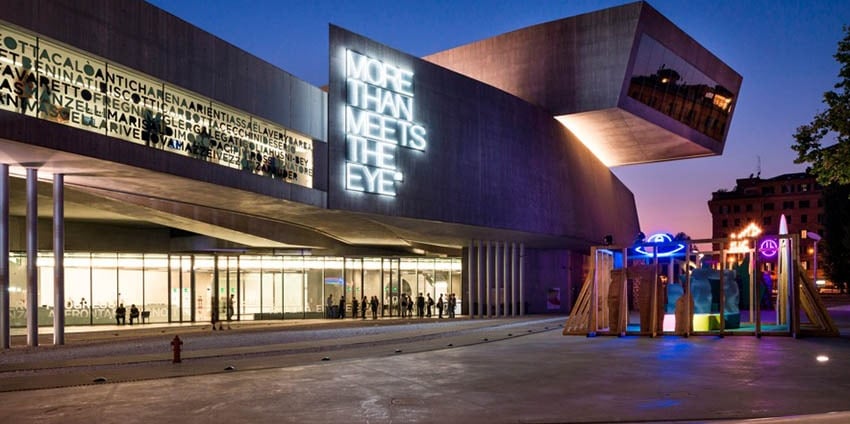MAXXI – The Future of Art Lives in Rome
Discover Italy's groundbreaking national museum for contemporary art and architecture, where innovation, experimentation, and beauty converge in a space like no other.


A Monument to the Contemporary
In the Eternal City where layers of history define every stone, the MAXXI Museum stands as a sharp, elegant disruption. Amid the ancient ruins, Renaissance domes, and Baroque churches of Rome, the MAXXI—the National Museum of 21st Century Arts—emerges like a whisper from the future. Its sinuous, concrete lines defy gravity and expectation, a building that feels alive, twisting and turning like an unfolding idea. Designed by the late Zaha Hadid, the museum is not just a container of culture, but a work of art in itself, a dynamic architecture that invites exploration, reflection, and dialogue.
MAXXI represents Italy’s bold step into the future, a place where contemporary creativity finds a permanent, dedicated home. In a country whose cultural identity is often bound to the past, the museum reasserts that Italy is also a living, breathing contributor to global artistic innovation.
The Vision Behind the Museum
The idea for MAXXI was born in the 1990s, during a period when Italy began seriously addressing the need for institutions that could celebrate the contemporary. Until then, modern and contemporary art often lacked institutional space, relegated to temporary exhibitions or included as afterthoughts in older institutions. The Italian Ministry of Cultural Heritage initiated the MAXXI project as a national platform for contemporary culture, covering both art and architecture. The vision was not merely to exhibit artworks but to create a living lab for the avant-garde.
It took over a decade from conception to realization. Construction began in 2003, and the museum officially opened to the public in 2010. From the start, MAXXI was about more than just walls and halls—it was about opening a portal between now and tomorrow, between the ideas that shape our physical spaces and the emotions that define our time.
Practical Information for Visitors
The MAXXI Museum is located at Via Guido Reni 4A, in the Flaminio neighborhood of Rome. It is accessible by tram (Line 2 from Piazza del Popolo), several bus lines, and is within walking distance of landmarks such as the Auditorium Parco della Musica and the Ponte della Musica.
Opening hours are typically from Tuesday to Sunday, 11:00 AM to 7:00 PM, with extended hours on Saturday evenings. The museum is closed on Mondays. It is recommended to check the official website for up-to-date hours, especially around holidays or special events.
Tickets can be purchased on-site or online. Reduced rates are available for students, seniors, and groups. Admission includes access to both the art and architecture collections, as well as most temporary exhibitions. Special guided tours and educational experiences can be booked in advance.
The museum is fully accessible to visitors with disabilities. Services include elevators, ramps, wheelchairs, and assistance for visually or hearing-impaired guests. There is a cloakroom, baby-changing facilities, and a beautifully curated museum shop featuring art books, design objects, and exclusive MAXXI merchandise.
For those interested in deeper engagement, MAXXI offers an annual membership program with benefits such as unlimited admission, discounts, exclusive previews, and member-only events.
Visit the official website: https://www.maxxi.art
MAXXI Architettura: A Temple for Space and Structure
Unique among global museums is MAXXI’s dual dedication to both art and architecture. The institution houses MAXXI Architettura, a parallel curatorial and research department that examines the built environment in all its facets. It is the first national museum in Italy specifically dedicated to architecture.
This part of the museum preserves and exhibits drawings, models, photographs, and archives of 20th and 21st-century architects. Among the most notable collections are the archives of Carlo Scarpa, Pier Luigi Nervi, and Aldo Rossi—giants of Italian architecture whose visions helped shape both the Italian and international landscape.
Architectural exhibitions often explore the intersections of space, culture, and identity. They may feature speculative projects, urban analysis, or interactive models that invite public participation. In this way, MAXXI does not merely display buildings; it deconstructs and reimagines them.
MAXXI Architettura also serves as a vital educational resource, with seminars, workshops, and partnerships with universities and research institutes. The museum becomes a site of learning and creation, where architecture is not only studied but practiced in theoretical and experimental forms.
A Cultural Hub Beyond the Galleries
MAXXI is not a museum in the traditional sense—it is a cultural ecosystem. Its outdoor plaza, Piazzale MAXXI, functions as an open-air venue for performances, installations, and community gatherings. Designed with the same fluid energy as the building itself, the plaza hosts events that spill into the surrounding Flaminio neighborhood, further integrating the museum with urban life.
Inside, the museum boasts an auditorium, research library, media room, and a design-focused bookshop. A sleek café and restaurant offer spaces to relax and discuss, while large open areas accommodate lectures, film screenings, and debates. The goal is clear: to stimulate engagement, to make art and ideas part of daily life.
Education is a major pillar of the museum's mission. Programs target all age groups, from schoolchildren to university students to lifelong learners. There are guided tours, hands-on workshops, artist talks, and collaborations with other cultural institutions. MAXXI is constantly experimenting with formats that go beyond passive observation and invite active participation.
Rome's New Identity Through Contemporary Culture
The presence of MAXXI in Rome is itself symbolic. Long considered the world's open-air museum, Rome’s identity has been deeply rooted in its ancient and classical heritage. MAXXI represents a deliberate recalibration. It asserts that Rome can honor its past while embracing the new.
Located in the Flaminio district, just north of the city center, the museum has contributed to a cultural revitalization of the area. Once dominated by mid-century apartment blocks and little-known sports facilities, the neighborhood now hosts a growing creative scene, with galleries, performance spaces, and startups sprouting around MAXXI’s gravitational pull.
This shift is not merely aesthetic. It is conceptual. The MAXXI challenges the notion that Italian culture must always look backward. It invites Italians and international visitors alike to consider the role of creativity in shaping not only how we see the present, but how we prepare for the future.




Zaha Hadid’s Masterpiece
The choice of British-Iraqi architect Zaha Hadid was itself a statement. Known for her radical designs, Hadid pushed the boundaries of form and function, favoring fluidity over symmetry, innovation over convention. Her design for MAXXI broke away from the traditional rectangular museum layout. Instead, she envisioned interweaving galleries and suspended walkways that ripple through the space like rivers through a landscape.
The building resembles a cascade of lines, each guiding the visitor through different perspectives, elevations, and horizons. There are no clear boundaries between rooms, no predictable paths to follow. The experience is intuitive, shaped by light, shadow, and movement. The result is a space that feels organic, as though the structure itself were exploring the art alongside the viewer.
Hadid’s use of concrete, steel, and glass is masterful. The massive exposed concrete surfaces don’t feel cold; they feel sculptural, textured, and alive. Natural light filters through complex skylights, casting ever-shifting patterns throughout the building. The museum's architectural narrative complements its mission—forever contemporary, forever in motion.
Art That Questions, Provokes, and Inspires
At the heart of MAXXI is its commitment to exploring the art of our time. The permanent collection is in constant flux, a growing tapestry of works from some of the most influential and innovative artists of the 21st century. While MAXXI does not have a rigidly chronological or encyclopedic collection, it emphasizes the diversity, dynamism, and depth of contemporary artistic voices.
From conceptual installations to multimedia works, performance art, painting, sculpture, and photography, the museum celebrates the multiplicity of form. Visitors may encounter a haunting video installation exploring refugee crises, followed by a room filled with abstract paintings that play with light and perception. The contrast is deliberate. At MAXXI, contradiction is part of the conversation.
Artists represented include Anish Kapoor, William Kentridge, Alighiero Boetti, Francesco Clemente, and Vanessa Beecroft, among many others. Italian contemporary art features prominently, as the museum seeks to both anchor and expand Italy's role in the global contemporary scene.
Exhibitions rotate frequently, and themes are often daring. Past shows have tackled topics such as the Anthropocene, post-humanism, the architecture of conflict, and the urban conditions of megacities. Temporary exhibits often involve commissioned works, pushing artists to respond directly to the museum’s architecture or societal challenges.








